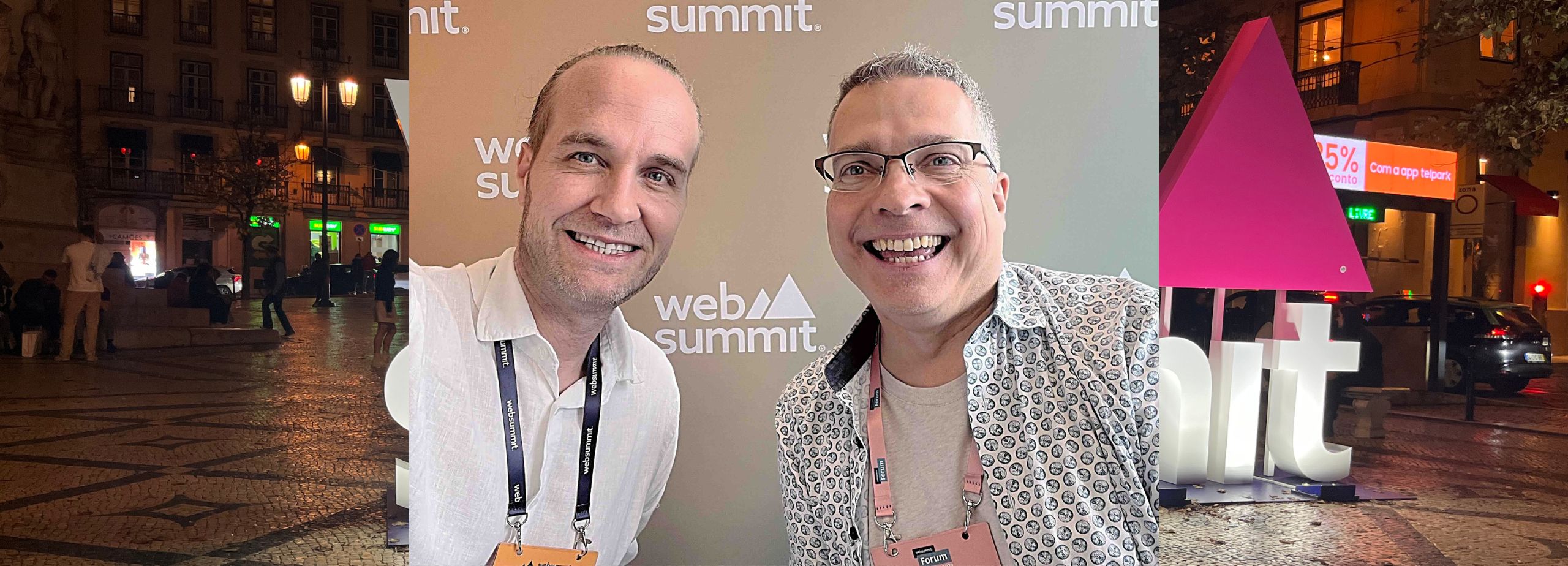Step into a world where education leaps off the screen and into your senses, with Nelly Tacheva guiding us through the revolutionary Metaverse environment of Tangra.
Prepare to be amazed as we uncover the ways virtual reality is not just changing the game but rewriting the rules for collaborative learning and cultural experiences. Join us as we explore the transformative power of 3D realms that breathe life into extinct creatures, reconstruct historical landmarks, and offer a vast array of customizable spaces for events as varied as art galleries and exotic networking retreats. With Nelly's insights, we'll see how Tangra's user-friendly platform is poised to take education and engagement into a dynamic future, making the most outlandish scenarios a virtual reality.
Strap in for a journey through marketing's next frontier, where we reveal how Tangra and emerging Metaverse platforms are setting the stage for unparalleled customer interactions. Imagine stepping into a brand's story, walking through digital showrooms, and attending global events without ever leaving your home. We'll dissect strategies that integrate the Metaverse into every facet of the customer's journey and share a glimpse of the exciting trends shaping 2024. As we discuss the impact of AI and digital scent technology, we underscore the importance of staying abreast with these advancements. This episode isn't just about envisioning the future; it's a hands-on tour of the burgeoning digital landscape where brand development and audience engagement collide in the most immersive ways imaginable.
___________________________________________________________
Ready to upgrade your Web3 marketing strategy? Don’t miss Consensus 2024 on May 29-31 in Austin, Texas. It is the largest and longest-running event on crypto, blockchain and Web3. Use code CMOSTORIES to get 15% off your pass at www.consensus2024.coindesk.com
Unlocking the Future: Tangra and the Metaverse Revolution
Imagine stepping into a world where learning, meetings, and brand experiences transcend the boundaries of reality. Welcome to Tangra, a platform that's reshaping the way we interact, learn, and engage in the digital age.
In simple terms, Tangra started as a dream to make online meetings more engaging than ever before, quickly evolving into a Metaverse platform capable of hosting large-scale educational events and immersive brand experiences. It's a place where educators can bring history to life, marketers can create unforgettable brand activations, and teams can collaborate in environments that spark creativity and connection. This isn't just about improving online interactions; it's about redefining them in a world where the only limit is your imagination.
The impact of Tangra and the broader Metaverse on education, marketing, and online collaboration is profound. It's not just changing how we do things; it's transforming what we believe is possible in a digital space.
Curious about how Tangra is making this all happen and what it means for the future of digital interaction? You're in the right place. Let's deep-dive into the world of Tangra and the Metaverse, answering all your burning questions along the way.
Introduction to Tangra
The Concept Behind Tangra
Tangra emerged from a simple yet powerful idea: to transform the mundane experience of meetings and team collaborations into something far more interactive and enjoyable. The initial vision was to create a superior alternative to conventional video conferencing platforms like Zoom. This idea set the foundation for what would soon evolve into a much larger and ambitious project.
Evolution of Tangra from a Better Version of Zoom to a Metaverse Platform
As the project progressed, Tangra underwent a significant transformation. Within a year, it evolved into a platform capable of hosting events for up to 1000 participants. This development was timely, coinciding with a period when many events transitioned to virtual formats, often within various Metaverse worlds. This shift not only made sense but also provided an easy way to reach a broader audience. The focus on educational events became apparent as most gatherings on the platform revolved around learning, whether through presentations, workshops, or panel discussions. This observation led to a deeper reflection on the platform's direction and goals.
The Shift Towards Educational Events and Content
The realization that Tangra could serve as a powerful educational tool was a pivotal moment. The platform's potential to host immersive learning experiences was vast. Imagine bringing extinct species back to life, reconstructing ancient cities, or showcasing objects that are difficult or expensive to bring into a traditional classroom setting. This vision of creating an engaging and interactive learning environment was deeply influenced by Nelly Tacheva's background. Initially prepared for a career as a high school math teacher, Nelly's passion for technology, databases, and coding led her down a different path. However, with Tangra, she found a way to merge her educational aspirations with her technological expertise, providing a platform for others to host educational events in a dynamic and captivating manner.
The Potential of Tangra as an Educational Tool
The unique capabilities of Tangra as an educational platform are truly remarkable. By leveraging immersive spaces, educators can present information in ways that are not only more engaging but also more memorable. According to the cone of learning, people tend to remember a significant portion of what they do and say, compared to what they read or see. Tangra capitalizes on this by offering an environment where students can actively participate in their learning process. Whether it's exploring virtual reconstructions of historical sites, interacting with 3D models of scientific concepts, or engaging in simulated activities, the platform provides an unparalleled opportunity for experiental learning. This approach not only makes learning more enjoyable but also enhances retention and understanding of complex subjects
Nelly Tacheva's avatar on Tangra
The Tangra Experience
The technology behind Tangra is both robust and innovative, providing a solid foundation for a wide range of virtual interactions. This technology facilitates not only voice and text communication but also the creation of photorealistically rendered spaces and avatars. This technical backbone is what allows Tangra to offer such a diverse and rich virtual environment, where users can interact in ways that closely mimic real-life interactions.
Different types of 3D spaces for various use cases are a hallmark of the Tangra platform. Depending on the nature of the event or meeting, the platform can provide spaces ranging from large arenas capable of accommodating thousands of participants to more intimate settings for smaller groups. For instance, non-profits may prefer gallery-like spaces to exhibit artwork or informational displays, while corporate events might require a setup that includes a stage, a big screen, and seating for a large audience. This flexibility in space design allows Tangra to cater to a wide array of needs, ensuring that each event is as effective and engaging as possible.
Interactive elements and features in Tangra significantly enhance the user experience. From the ability to host events on a tropical island complete with sunny ambiance and ocean views to incorporating a DJ booth for music, Tangra goes beyond traditional virtual meeting spaces. Users can engage in a variety of activities, such as taking a boat ride, exploring the ocean, or simply enjoying the virtual scenery. The addition of AI-generated music by the DJ further enriches the environment, creating a dynamic and immersive experience. These interactive elements not only make the events more enjoyable but also help in maintaining the participants' focus and engagement throughout.
The goal of bridging the gap between the physical and virtual world is central to Tangra's mission. The platform strives to replicate the nuances of real-world interactions within its virtual spaces, thereby providing an experience that is as close to reality as possible. However, it also leverages the unique advantages of the virtual world, such as the ability to instantly poll the audience or conduct quizzes, adding a layer of interactivity that is often missing in traditional settings. By combining the best aspects of both worlds, Tangra aims to offer an unparalleled experience that enhances learning, collaboration, and social interaction in the virtual space. This approach not only caters to the current needs of users but also sets a new standard for what virtual platforms can achieve.
The Role of Tangra in Education
The importance of continuous learning is a cornerstone of the philosophy behind Tangra. In today's rapidly evolving world, the notion that education ends upon receiving a diploma is outdated. Continuous learning is not just beneficial; it's necessary for both personal growth and professional development. This belief in lifelong learning drives Tangra's mission to transform how knowledge is shared and absorbed. By leveraging the immersive capabilities of the Metaverse, Tangra aims to make learning an ongoing, engaging, and enriching process for individuals across various stages of their lives.
The shortcomings of current online learning platforms became glaringly apparent during the global shift to remote education necessitated by the pandemic. Traditional online learning environments often fail to capture the essence of interactive and engaging education. Students found themselves disengaged, struggling to retain information presented in static formats such as webinars or text-based content. This disconnect highlighted the need for a more dynamic and interactive approach to online learning, one that could mimic the engagement and interactivity of in-person experiences while leveraging the accessibility and convenience of digital platforms.
The potential of Tangra to improve learning experiences lies in its immersive nature and the ability to create engaging, interactive environments that go beyond the limitations of traditional online learning platforms. Imagine being able to walk through ancient cities, interact with extinct species, or manipulate complex machinery in a virtual space. These experiences, which would be difficult, expensive, or impossible to replicate in a physical classroom, can be easily facilitated within Tangra's Metaverse. This not only makes learning more engaging but also enhances comprehension and retention by allowing learners to experience concepts in a hands-on manner.
The goal of active participation and retention of information in learning is at the heart of Tangra's educational philosophy. Drawing from the cone of learning, which suggests that people retain more information by doing rather than just reading or listening, Tangra seeks to maximize learner engagement and knowledge retention. By creating a platform where students can actively participate in their learning process—through speaking, doing, and interacting in a virtual environment—Tangra aims to significantly improve the effectiveness of online education. This approach not only makes learning more enjoyable but also ensures that knowledge is deeply ingrained, thereby making the educational process more fruitful and rewarding for all involved.
Tangra for Marketers
Replacing webinars with immersive experiences is a transformative approach that Tangra brings to the table for marketers. In an era where digital fatigue is real, and engagement rates are plummeting, the traditional webinar format is losing its effectiveness. However, by transitioning these experiences into the Metaverse, marketers can captivate their audience in ways previously unimaginable. Imagine hosting a product launch where attendees can interact with the product in a three-dimensional space, or conducting a workshop where participants can practice skills in real-time within a virtual environment. This level of interactivity not only boosts engagement but also enhances the memorability of the content, making it a powerful tool in a marketer's arsenal.
Showrooms for showcasing products and services offer another compelling use case for marketers within Tangra's platform. The ability to create detailed, immersive showrooms in the Metaverse allows brands to present their offerings in a dynamic and interactive manner. Customers can virtually "walk" through these spaces, interact with products, and even customize features to their liking, providing a deeply personalized shopping experience. This not only aids in the decision-making process but also elevates the brand's image by showcasing its innovative edge. For instance, a car manufacturer could create a virtual showroom where potential buyers can customize their vehicle's color, interior, and accessories in real-time, offering a level of engagement and personalization that traditional online or physical showrooms struggle to match.
Building branded Metaverse spaces is yet another avenue for marketers to leverage the power of Tangra. These spaces serve as virtual extensions of a brand's physical presence, offering a new dimension for customer interaction. Whether it's a virtual office, a digital campus, or an immersive brand experience, these spaces can significantly enhance a brand's visibility and accessibility. By inviting customers into these branded worlds, companies can foster a sense of community and loyalty, while also providing a platform for showcasing products, services, and brand values in a novel and engaging way.
The potential of Metaverse experiences in different stages of the buyer's journeys is immense. From awareness to consideration, decision-making, and post-purchase delight, each stage can be uniquely enhanced through immersive experiences. In the awareness stage, for example, an immersive experience can help customers understand their needs and the solutions available in a more engaging way. During the consideration stage, virtual showrooms and product demos can provide a deeper understanding of the offerings, helping customers make informed decisions. When it comes to decision-making, the ability to compare features and visualize products in a three-dimensional space can be a game-changer. Finally, in the post-purchase stage, immersive experiences can continue to engage customers, turning them into brand advocates and repeat buyers. By integrating these experiences into their marketing strategies, brands can not only stand out in a crowded market but also build stronger, more meaningful connections with their customers.
Engaging Customers in the Metaverse
Involving customers in decision-making processes is a revolutionary approach that significantly enhances customer engagement and satisfaction. Imagine inviting your clients to participate in a workshop or focus group within an immersive Metaverse environment. Here, they could have the opportunity to make key decisions about new products, such as selecting the color and fabric of a new sofa line. This not only makes them feel valued and engaged but also provides invaluable feedback directly from the target market. Such participatory experiences can transform the traditional customer-seller relationship into a collaborative partnership, fostering a deeper connection between the brand and its clientele.
Enhancing customer engagement through immersive experiences takes the concept of customer interaction to a whole new level. By creating spaces where customers can immerse themselves in the brand's world, companies can offer unique experiences that are not possible in the physical world. For instance, customers could virtually test out a sofa in different settings within their home, or experience how a blanket feels in a cozy, digitally created winter cabin. These immersive experiences not only help in making informed decisions but also leave a lasting impression on the customer, significantly enhancing brand recall and loyalty.
The role of tangible or digital tokens in customer retention is an innovative strategy to appreciate and retain customers. Following their participation in decision-making processes or immersive experiences, sending customers a token of gratitude, such as a pillow, a blanket, or even a digital asset, can significantly enhance their sense of belonging and loyalty to the brand. These tokens serve as a physical or digital reminder of their unique experience with the brand, encouraging them to remain engaged and connected even after their purchase. This thoughtful gesture not only delights customers but also turns them into brand advocates who are more likely to share their positive experiences with others.
Opportunities for improving customer interactions in the Metaverse are boundless. The Metaverse offers a plethora of avenues to interact with, delight, and engage prospects and clients throughout their entire customer journeys. From the initial awareness stage to post-purchase engagement, every touchpoint can be enhanced through the Metaverse capabilities. Brands can leverage this technology to create more personalized, engaging, and memorable experiences that resonate deeply with their audience. Whether it's through participatory design workshops, immersive product demonstrations, or the provision of digital tokens, the metaverse presents an exciting frontier for reimagining customer engagement strategies. The key to success lies in continuously exploring these opportunities to improve and innovate on how brands interact with their customers, ensuring they feel valued, understood, and excited about their relationship with the brand.
The Evolution of Tangra and the Metaverse
Transition from hype to building real products for real customers marks a significant milestone in the evolution of Tangra and the broader Metaverse ecosystem. The initial phase of the Metaverse development was characterized by a whirlwind of excitement and speculation, with many unrealistically high expectations and a cacophony of noise surrounding what the Metaverse could potentially offer. However, as the dust settles, the focus has shifted towards creating tangible value through real products and services that address genuine customer needs and use cases. This transition from hype to substance is a critical development, as it signifies the maturation of the Metaverse as a platform for innovation and practical solutions. By concentrating on where the technology can make a real impact, developers and companies like Tangra are beginning to unlock the true potential of the Metaverse, moving beyond theoretical possibilities to actual implementations that enhance the user experience and offer real-world utility.
The impact of technology on the development of the Metaverse is profound and multifaceted. The Metaverse, as a concept, relies heavily on a confluence of technological advancements across various domains. From hardware innovations like VR headsets, smart glasses, and haptic feedback systems to software breakthroughs enabling real-time rendering of photoreal, virtual worlds, and avatars, each technological stride contributes to making the Metaverse more accessible, immersive, and engaging. These advancements are not just enhancing the quality of virtual experiences but are also making them more affordable and widespread. The continuous improvement in GPU power, alongside the evolution of internet infrastructure, plays a pivotal role in supporting the complex, data-intensive environments of the metaverse. As these technologies evolve, they lower the barriers to entry, allowing more people to participate in and contribute to the Metaverse, thereby accelerating its growth and development.
The challenges and progress in creating 3D assets highlight one of the significant hurdles in the path to realizing a fully immersive Metaverse. The creation and positioning of 3D assets in virtual environments remain a labor-intensive, manual, and time-consuming process. Despite the advancements in technology, the complexity of designing detailed, realistic 3D models that can be seamlessly integrated into virtual spaces poses a considerable challenge. However, the industry is making strides in overcoming these obstacles through innovations in 3D modeling software, automation, and the development of more efficient workflows. As these tools and techniques continue to evolve, the process of creating and deploying 3D assets in the Metaverse will become more streamlined and scalable, paving the way for richer, more complex virtual experiences.
The role of hardware and software advancements in shaping the Metaverse is undeniable. The rapid pace of technological innovation in both hardware and software is fundamentally transforming the capabilities and reach of the Metaverse. On the hardware front, the continuous improvement and miniaturization of VR and AR devices are making immersive experiences more comfortable, realistic, and accessible to a broader audience. Meanwhile, on the software side, advancements in graphics processing, artificial intelligence, and network technologies are enabling the creation of ever more detailed and interactive virtual environments. These technological leaps are not only enhancing the user experience but are also expanding the possibilities for what can be achieved within the Metaverse. From digital scent technology that adds a new dimension of realism to virtual worlds to AI-driven avatars that can interact with users in sophisticated ways, the boundaries of what the metaverse can offer are continually being pushed further. As these technologies converge and synergize, they lay the foundation for a metaverse that is increasingly integrated into our daily lives, offering unprecedented opportunities for connection, creativity, and commerce.
The Future of the Metaverse
The convergence of various technologies in the Metaverse is a fascinating aspect that promises to revolutionize how we interact with digital environments. This convergence is not just about the blending of virtual reality (VR), augmented reality (AR), and artificial intelligence (AI), but also includes the integration of other cutting-edge technologies such as blockchain, 5G, and the Internet of Things (IoT). Each of these technologies brings its unique strengths to the table, creating a more immersive, interactive, and seamless Metaverse experience. For instance, blockchain technology offers a secure and decentralized way to manage digital assets and transactions within the Metaverse, enhancing trust and user autonomy. Meanwhile, 5G connectivity ensures high-speed, low-latency internet access, making real-time interactions in dense, complex virtual environments possible. The IoT, on the other hand, bridges the gap between the physical and virtual worlds, allowing for a level of interactivity and responsiveness previously unimaginable. As these technologies continue to evolve and integrate, the Metaverse will become an increasingly integral part of our digital lives, offering new ways to work, play, and connect.
The potential of digital scent technology in virtual worlds is another groundbreaking development that could significantly enhance the realism and immersion of the Metaverse. Imagine walking through a virtual forest and being able to smell the fresh pine or feeling the ocean breeze and its salty scent as you stroll along a virtual beach. Digital scent technology aims to make this possible by replicating and delivering scents in a controlled manner, adding a new dimension to virtual experiences. This technology could have wide-ranging applications, from enhancing the realism of virtual travel and exploration to creating more immersive gaming and entertainment experiences. Moreover, it could also have practical uses in education and training, allowing students and professionals to gain a deeper understanding of their subjects through a more multisensory learning experience. As digital scent technology continues to develop, it will undoubtedly open up new possibilities for creating rich, engaging, and lifelike environments within the Metaverse.
The continuous innovation and advancements in the Metaverse are driven by the relentless pursuit of creating more realistic, interactive, and engaging virtual environments. Every day, researchers, developers, and companies across the globe are pushing the boundaries of what's possible in the Metaverse. From improving the fidelity and responsiveness of virtual avatars to developing more intuitive and immersive user interfaces, the pace of innovation is rapid and relentless. These advancements are not only making the Metaverse more accessible and enjoyable for users but are also expanding its potential applications. For example, the development of more sophisticated AI algorithms is enabling the creation of virtual assistants and digital beings that can understand and respond to user inputs in nuanced and meaningful ways. Similarly, advancements in spatial computing are allowing for more natural and intuitive interactions within virtual spaces, making the Metaverse a more integrated part of our physical world. As these innovations continue to unfold, the metaverse is set to become an ever more vital platform for social interaction, entertainment, education, and business.
The impact of the Metaverse on technology and innovation extends far beyond the confines of virtual worlds. The development of the Metaverse is acting as a catalyst for technological innovation, pushing the limits of what's possible and driving advancements across a wide range of fields. For instance, the demand for more realistic and immersive virtual experiences is accelerating the development of next-generation computing hardware, including more powerful processors, advanced graphics cards, and innovative display technologies. Similarly, the need for seamless, real-time interactions within the Metaverse is spurring improvements in network infrastructure, leading to faster internet speeds and lower latency. Furthermore, the Metaverse is also fostering innovation in areas such as digital identity, privacy, and security, as these become increasingly important in virtual environments. As the Metaverse continues to evolve, its influence on technology and innovation will only grow, shaping the future of digital experiences and opening up new horizons for what's possible in the virtual and physical worlds alike.
The Role of the Metaverse in Marketing and Brand Development
The importance of education in understanding the Metaverse is paramount for marketers and brand developers aiming to leverage this new frontier. As the Metaverse continues to evolve, staying informed and educated about its capabilities, technologies, and potential applications becomes critical. This knowledge not only empowers individuals and organizations to make informed decisions but also enables them to identify and seize opportunities within this burgeoning space. For instance, understanding how virtual reality (VR) and augmented reality (AR) can be used to create immersive brand experiences can help marketers design campaigns that truly resonate with their audience. Similarly, a grasp of blockchain technology and digital assets can open up new avenues for customer engagement and loyalty programs. Education in this context is not just about technical know-how; it's about envisioning the future of consumer interactions and being prepared to meet them where they are increasingly spending their time: in virtual worlds.
The potential of the Metaverse as a new marketing channel is immense, offering unprecedented ways to engage with consumers. The Metaverse provides a canvas for creativity and innovation, allowing brands to create experiences that are not possible in the physical world. From virtual showrooms and product launches to interactive brand activations and events, the possibilities are endless. This new marketing channel offers a level of immersion and interactivity that traditional digital marketing channels can't match, enabling brands to forge deeper connections with their audience. Moreover, the Metaverse allows for highly personalized experiences, leveraging data and AI to tailor interactions to the individual preferences and behaviors of each user. As consumers increasingly value experiences over products, the Metaverse presents a unique opportunity for brands to differentiate themselves and create lasting impressions.
The transformation of the customer's journeys in the Metaverse is a significant shift from traditional models. In the Metaverse, customer journeys can be more dynamic, interactive, and personalized, transcending the limitations of physical and digital channels. Brands have the opportunity to engage with customers at various touchpoints, from initial discovery and exploration to purchase and post-purchase support, all within immersive virtual environments. This not only enhances the customer experience but also opens up new avenues for data collection and analysis, providing deeper insights into customer preferences and behaviors. Furthermore, the Metaverse enables brands to create continuous engagement loops, keeping customers involved and invested in their brand story and community. By transforming customer journeys in this way, brands can build stronger relationships, foster loyalty, and drive long-term value.
The need for immersive marketing strategies in the Metaverse is becoming increasingly clear as more brands enter this space. Developing a successful marketing strategy for the Metaverse requires a deep understanding of the platform's unique characteristics and the audience it attracts. It's not just about replicating existing digital marketing tactics; it's about reimagining what engagement, storytelling, and community building look like in a fully immersive, interactive environment. Brands must consider how to leverage the Metaverse capabilities to create experiences that are engaging, meaningful, and memorable. This might involve collaborating with creators and influencers within the Metaverse, utilizing gamification elements to enhance engagement, or exploring new forms of content that are native to this environment. As the Metaverse continues to grow and evolve, brands that can adapt and innovate their marketing strategies to meet the expectations of this new frontier will be well-positioned to thrive.
Wrapping Up: The Tangra Metaverse Experience
As we close the chapter on Tangra and its role in the evolving Metaverse, it's clear that this platform is more than just a virtual space—it's a gateway to immersive learning, marketing, and customer engagement.
- Tangra has transformed from a simple alternative to video conferencing into a robust educational and marketing platform within the Metaverse, offering unique, immersive experiences that traditional platforms can't match.
- Its focus on creating dynamic, interactive environments for learning and marketing showcases the potential of the Metaverse to revolutionize how we share knowledge, engage with brands, and experience digital content.
- Continuous innovation and technological advancements are key to Tangra's success, highlighting the importance of staying ahead in the rapidly evolving digital world.
But as we venture further into this digital frontier, one question remains: How will Tangra and similar platforms ensure accessibility and inclusivity in the Metaverse, ensuring that these revolutionary experiences are available to all? Until we meet again in the digital expanse, let's ponder on this thought.
KEY HIGHLIGHTS
[00:48] Could you explain briefly what Tangra is about and share how you started it, Nelly?
[04:04] Do you refer to Tangra as a Metaverse or do you use another term, like "Immersive platform," to define it?
[05:36] Can you describe to our listeners what an event looks like on the Tangra platform?
[11:10] Do you think this kind of Metaverse could be used to involve distant family members in events like weddings when they can't travel?
[15:54] What would be a good use case for marketers listening to this podcast to utilize in the Metaverse?
[24:02] What excites you the most about the current developments with Tangra or the evolving trends in the market this year?
[28:39] How can people reach you, Nelly, and what would you like to say to them?
NOTABLE QUOTES
“We wanted to make meetings and team collaboration much more interactive and much more fun.”
“We've built this metaverse platform, and we realize how impactful it could be as an educational tool.”
“Our goal is to bring together as many technologies as possible and provide that experience, which is, again, a much better one than we currently have, on platforms like Zoom.”
“We revolve all around education, because I strongly believe as an educator myself... that we have to continue learning throughout our lives.”
“The metaverse is already here. It is only growing. It would be a trillions dollars, trillion US dollars market.”
MENTIONED RESOURCES
Try out Tangra: https://tangra.link/r/metaverse
CONNECT
LinkedIn: https://www.linkedin.com/in/nelly-tacheva/







